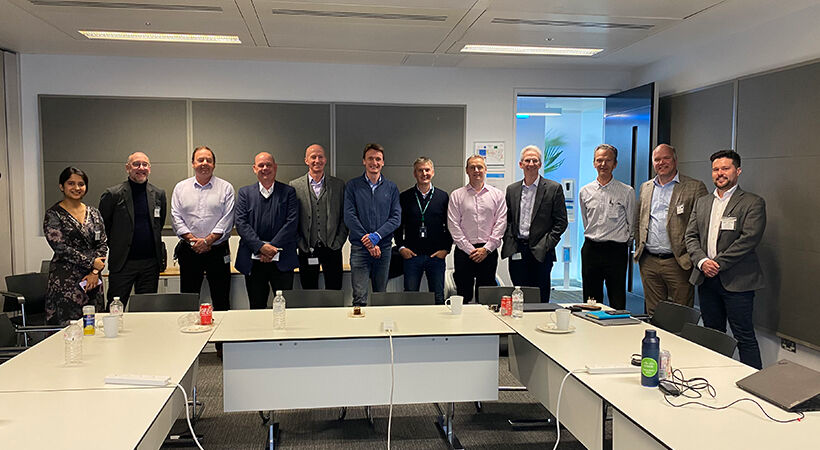
This is a ‘reprint’ of my summart of a round table discussion I moderated on how energy efficiency is vital in legacy buildings to achieve net zero goals that I put together for Smart Buildings Magazine with smart building technology consultant.
Participants included:
- Sam Wood, Head of Business Development, EMEA Region, Hybrid Work, Smart and Sustainable Environments at Cisco
- Colin Seward, Chief Sustainability Office Technology Lead at Cisco
- Mark Nallen, Director – Technology & Innovation at Canary Wharf Group plc
- Peter Bicknell, Global Engineering Operations Director at CBRE
- Andrew Heiser, Senior FM, Integration and Operations Manager GWS EA FM Client at CBRE
- Jim Gardner, CT Advisors Team – DfE – Service Owner Digital Platforms and GenZero Technology Lead at the Department of Education
- Crawford Wright, Head of Architecture and Design: Schools and Colleges at the Department of Education:
- Alex Bailes, CTO at Brockton Everlast
- Fiona Sawkill, Head of Digital Placemaking at British Land
- Catriona Cantwell, Senior Project Manager at Landsec
- Neil Pennell, Head of Design Innovation and Property Solutions International at Landsec:
- WELL Building Institute (IWBI): Giovanna Jagger, Senior Director ESG Market Development EME
- Peter Dijkstra, Commercieel directeur at Connect D
- Shreya Sheth, Associate Director at Patrizia AG
There’s an oft quoted statistic from the UN Environment Programme in nearly every smart buildings presentation about how nearly 40% of global emissions come from real estate. But there’s another important one from the World Economic Forum about how approximately 80% of the buildings we have today still being in use in 2050, hence their retrofitting for energy efficiency being essential as part of the drive towards net zero. Yet despite industry understanding about that need and all the talk about the opportunity, there is a surprising lack of information and guidance on retrofitting buildings. That is a potential barrier to the adoption of retrofit. As part of trying to remedy this we co-facilitated a Round Table gathering in Mid-April of mostly developer, owner and operator participants that was kindly hosted by Cisco at their London City HQ.
We’ve selected four of the top key takeaways from those discussions and conversations with a wider group of stakeholders, which have informed our thoughts on how to build more appetite and understanding about retrofitting buildings and the benefits of introducing smart technologies.
Sustainability is the driver of retrofit, not more services
There was consensus about the key difference between retrofit and new build projects. With retrofit there is existing plant and infrastructure in place, and often occupiers as well. The wide range of building age and types also means that projects are rarely the same. That makes technology specification more complex, particularly the kind of templating of operation technology and its convergence that goes on in new builds. And not least because of the sustainability and financial constraints of replacing and securing existing assets, e.g. Opex vs Capex, embedded carbon, etc.
The complexity has been compounded post-pandemic as buildings become more multi-tenanted. This combined with the significant rise in hybrid working makes “Smart” harder to achieve given the differing needs of tenants and that getting them on board as investment is often passed on via service charges. However, there was also consensus that sustainability is the driver of retrofit, not more services. But as Dr Matthew Marson at JLL Technologies pointed out to us there is a tough challenge ahead given the net zero yearly energy consumption target of 55kWh per m2, when average is around 160 kWh and best in class around 110.
Start with low hanging fruit to scale retrofit
To meet that challenge Dr Marson says we need to be looking at which technologies are most impactful and can be easily retrofitted to reduce resource consumption and drive energy generation. But before looking at major system replacements, renewable sources of energy or architecture upgrades, the targeting of low hanging fruit could be the means to help scale retrofitting.
As Shreya Sheth at PATRIZIA SE explained:
“The first 30% of carbon reduction can be achieved with efficient operations of the technologies in the building from gathering the data to optimising HVAC run times with AI and finally having the operations in autonomous mode.”
Her point being that the measuring of ROI around carbon reduction can translate into lower utilities/service charge without impacting operations and occupier experience. And how the technology helps with delivering those measurable results is something that can be replicated and scaled – hence talk from some operators about putting in tech for free in return for the savings that can be made.
Operations are key, but there’s a skills gap that needs to be plugged
As Nico Lomas at WiredScore observed, a Venn diagram of Operations-led and User Experience-led emerged when discussing who ‘owns’ building retrofit. Those two ‘sides’ are equally true of new builds, particularly post practical completion – prompting discussion about the need for operators to be involved earlier in smart building specification particularly around input on the capabilities and influence of technology rather than the kit itself. However, Operations and User Experience sides are not always aligned, and rarely the ideal of being one and the same. That’s partly about a skills gap among those at the sharp-end who are responsible for making the promise of smart buildings happen when they are in use, and that includes operating and maintaining of all the technology deployed. Plugging that gap will require both education and new hires, not least being data analysts. If not, smart technologies can fail to deliver and that can lead to the vicious circle behind why they often get valued-engineered out at the design stage.
Opportunity to be more agile with retrofit
Despite some of the complexity mentioned earlier, retrofitting represents an opportunity to be more agile. Time frames involved can be shorter compared to new build, where there’s a risk of solutions being out of date given the fast pace of technology change. To avoid this decisions could be taken closer to Practical Completion. However, this is often not workable as design specifications need to be finalised early in the project programme.
But as LMG’s Mike Hook observed there is an opportunity where building infrastructure and services may already exist to undertake rapid-type prototyping thus enabling more informed data decision making. This can help de-risk investment decisions not just on how and why technology is subsequently deployed and managed in retrofits, but the data from that prototyping can also help inform decisions about technology templates for new build projects. That may mean rethinking how Cost Control is conducted, but what is exciting is there are owners and operators that already have frameworks/policies about what data is actually needed to make informed decisions rather than just nice to have. For example, Fiona Sawkill at British Land explained there may be around 20 systems in a fully specified smart building, but with retrofit they’d focus on getting data from five areas before looking at any asset replacement (eg, energy generation, BMS, access control, HVAC, lighting).
What next?
We’ve focused on sustainability here but, as mentioned above, stakeholders have differing needs. These also include lowering costs in general, improving productivity and reducing employee churn.
It is worth noting that the drivers for creating and justifying a smart building, whether for retrofit or new build, have changed significantly in recent years. A decade or two ago most Smart Building initiatives were driven from the bottom up by technology manufactures, engineers and building contractors. They provided building environmental systems to address the needs of the building and those maintaining them.
The emphasis now for Smart Building realisation is to adopt a top down approach where the needs of building occupants is the starting point. Their requirements and expectations have placed ever increasing challenges on work space designers and technology providers. It follows that there are now many more stakeholders involved and the whole journey to Smart has become much more complex as a result.
That creates an emerging disconnect around communication and understanding between some of the many parties involved in the whole process. Exploring these shortcomings further could feed into helping create a common understanding between all stakeholders from which a set of accepted principles, frameworks and best practice guides could be compiled. However, this is more likely to emerge through collaboration around a common goal, i.e. sustainability.
But that will require thinking more holistically about not just sustainability and how technology can help with this, but also the future of work and projecting that out to 2030, 2040 and further. And that in turn will require going beyond what historical data and predictions can be derived from the dashboard by engaging with people working in and operating buildings, e.g. to better understand how their work experiences can be improved, how they can contribute to the drive to net zero, etc. That’s a bigger project, but what we hope we have shown here is that there are frameworks already being developed and applied. If these can get shared among all stakeholders along with what has been learned from their application, it will help answer the questions posed by Dr Marsden above about what technologies are most impactful for harnessing the data from them for the benefit of the users and the owners. These technologies could also be easily retrofitted to reduce resource consumption and drive energy generation. We also see that as a starting place to help encourage greater adoption of retrofitting buildings, but also how they can be better designed and built.



